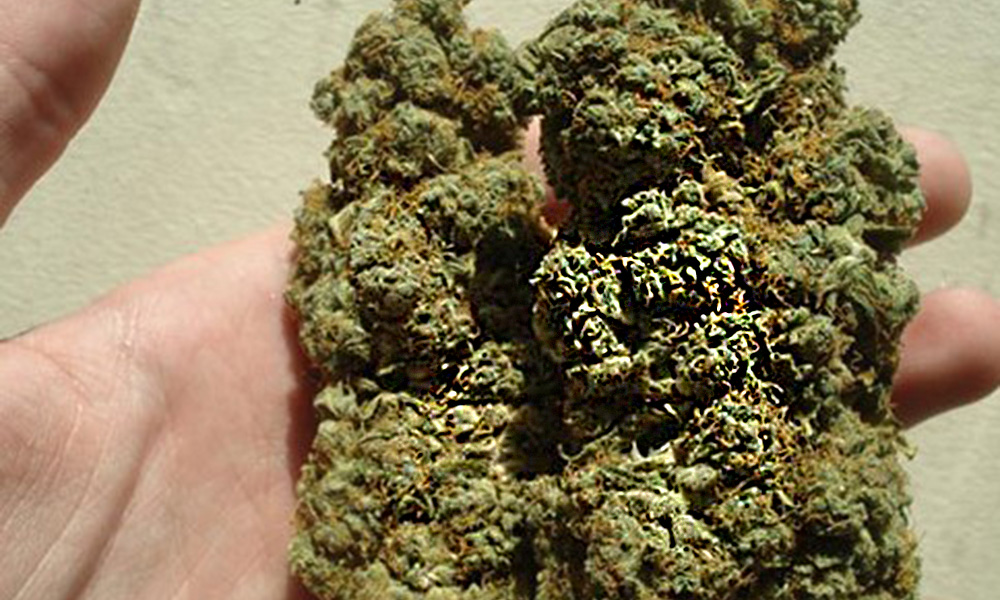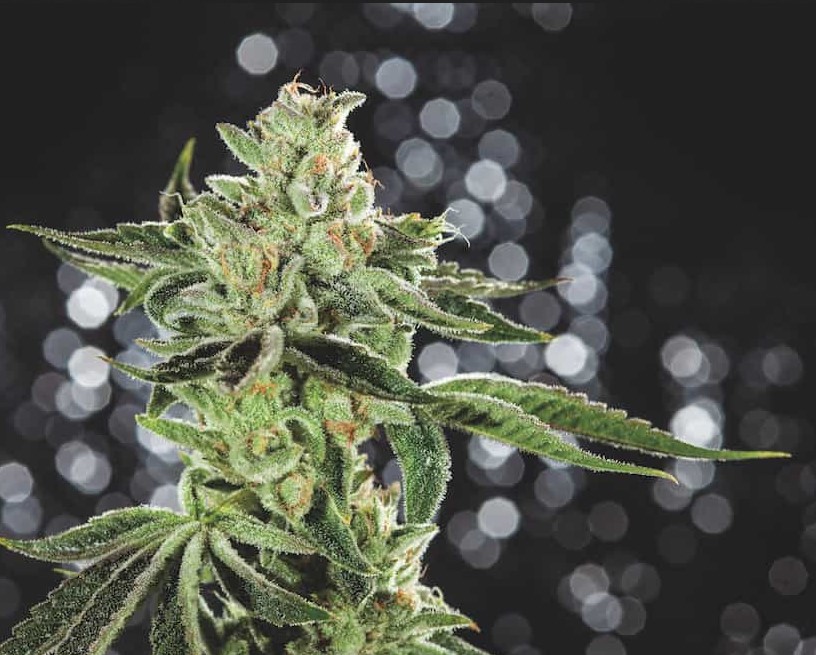PTSD cannot be cured as a mental illness. Medical cannabis strains, on the other hand, may be used to treat anxiety and PTSD. To assist individuals living with PTSD manage their traumatic experience, the first step should be to utilize psychotherapy or group therapy. The ability to forget about this terrible event is dependent on how traumatic the event was for people with PTSD, as well as how effectively they employ the tools provided by the therapist.

Many people who suffer from post-traumatic stress disorder benefit from cannabis and cannabinoid therapy as a complement to treatment. Many individuals who have been affected by PTSD use particular strains of cannabis to cure sadness and anxiety. Depression and anxiety are two of the most prevalent symptoms among those who have experienced PTSD. Cannabis’ soothing impact, stimulating effects of Sativa plants, and CBD’s calming influence are all means by which it might be used to treat PTSD symptoms.
Individuals with post-traumatic stress disorder (PTSD) often report the following symptoms: chronic pain, sleeplessness, and loss of appetite. Certain marijuana strains (particularly those high in CBD) can provide significant relief for individuals who have PTSD.
What is PTSD?
Post-traumatic stress disorder (PTSD) is a mental health condition that develops in some individuals who have experienced a frightening, traumatic, or dangerous event. Not everyone who goes through a traumatic event/s gets PTSD. Many are able to move beyond these events with their coping skills and prior lived experiences.
Yes, the fact is much darker for up to 10% of people who survive a traumatic event. These persons are plagued by recurring thoughts, flashbacks, and other symptoms of PTSD. Cannabis has shown to be a supplement for many of these survivors in assisting them face, manage, and heal from these experiences.
Cannabis for PTSD
Many have known for a long time that cannabis can assist with post-traumatic stress disorder (PTSD), but a lack of peer-reviewed evidence to support this has kept the truth under wraps. We’re on our way to more inclusive, reputable research on cannabis for PTSD as a result of two new studies.

According to a recent study from Wayne State University in Michigan, cannabis usage can have an impact on the amygdala region of the brain in those who suffer from PTSD. The amygdala is involved with our fight, flight, freeze, and fawn responses during a traumatic event. Researchers found that “low doses of ∆9-tetrahydrocannabinol (THC) may elicit anxiolytic effects by decreasing threat-related amygdalar activation and enhancing functional interaction between the amygdala and medial prefrontal cortex and adjacent rostral cingulate cortex (mPFC/rACC) during threat processing in healthy adults.”
Is Indica Or Sativa Better For PTSD?
Indica and Sativa are the two strains of cannabis. Both cannabis varieties include two primary chemicals: THC and CBD. THC is responsible for producing the euphoric high feeling produced by cannabis, while CBD is non-psychoactive and can counteract it. As a result, individuals suffering from PTSD who want to remain attentive when using marijuana employ strains with a lot of CBD content.
When it comes to Indica vs. Sativa, anxiety is often better relieved by Indica cannabis strains since to their high CBD concentration and low THC levels. Because of the large amounts of CBD in these marijuana types, Indica marijuana plants are also effective at treating chronic pain, inflammation, and sleeplessness.
The higher THC concentration and lower CBD content in Sativa cannabis strains makes them more intoxicating and energizing, making many persons with PTSD use these kinds of cannabis to alleviate symptoms of depression.
Weed Strains That Help Combat PTSD
Before the magic happens, it’s critical that you understand the distinction between cannabis strains high in THC and those high in CBD.
High CBD strains are known for their mood-stabilizing properties, while high THC is more popular at night since it may assist with a good night’s sleep.
We’ve handpicked six of the finest strains for PTSD, having recognized that there are a lot of different types on the market.
Blue Dream is a great combination of energizing and soothing effects with just the right amount of THC and CBD. Blue Dream is a hybrid strain of marijuana, making it one of the greatest strains for anxiety and sadness.
Another hybrid strain with a considerably greater THC concentration than the majority of cannabis strains is Pineapple Express. As a result, it’s one of the greatest cannabis varieties for listening to music and socializing.
Sunset is one of the finest strains for both anxiety and post-traumatic stress disorder (PTSD). It has a serotonin-boosting, euphoric Indica quality. Anxiety is far easier to live with for those suffering from PTSD since it contains a THC concentration of 23.7 percent and a CBD content of 0.07 percent.
The Dakini Kush is ideal for pain and anxiety since it relaxes the body and elevates the mind. This cannabis strain can be used to improve one’s mood and reduce pain in people with PTSD and anxiety who suffer from chronic discomfort.
Medical Cannabis for PTSD Anxiety and Depression
According to some studies, marijuana helps with anxiety and sadness. Some people who have PTSD will experience a significant reduction in these symptoms. Others may notice an increase in both paranoia and anxiety, as well as a worsening of their condition. However, the pills that doctors prescribe for the treatment of PTSD have similar opposing effects. Selective serotonin reuptake inhibitors, for example, can increase the severity of depression and anxiety symptoms. In fact, some of these medicines have been linked to suicidal thoughts and acts. Medical marijuana has not been linked to suicide in any meaningful way.
Marijuana, PTSD and Reduced Risk
Post-traumatic stress disorder (PTSD) can lead to self-medication, according to studies and the Department of Veterans Affairs. When prescribed medicines fail to provide relief, patients take drugs like marijuana and alcohol to relieve their symptoms.
Although the VA has yet to conduct research on the impact marijuana may have on individuals with PTSD, it has discovered a link between veterans who seek medical care from the VA and those with cannabis use disorder.
According to the Department of Veterans Affairs, 40,000 veterans with PTSD who were seen by the VA in 2014 were identified as having a cannabis use disorder. The reason for this is probably two-fold. When conventional therapies for PTSD fail, individuals with the condition are likely to self-medicate. Some people opt to smoke marijuana when alcohol isn’t enough to help them sleep and relax.
However, in many regions, marijuana is not considered a cure for PTSD, which leads many sufferers to self-medicate without their therapists or physicians knowing. However, since individuals who self-medicate with marijuana don’t know what they’re smoking, how powerful the strain of cannabis is, or even what compounds may be in it, that might imply they’re using a type of cannabis that will be less effective than one they could get from a marijuana doctor and purchase from an authorized dispensary.
In addition, the VA has noted that individuals with PTSD are more likely to have difficulty quitting marijuana smoking than those without. As a consequence, it’s even more critical that medical advise be accessible to people suffering from PTSD who wish to use marijuana as a treatment. If persons who suffer from PTSD were permitted prescription cannabis, the danger of side effects, abuse, legal difficulties, and stigma would most certainly be lowered or eliminated.
Medications for the treatment of PTSD can have severe adverse effects. There is also treatment-resistant post-traumatic stress disorder. Patients who are unable to take prescribed medications for PTSD are left with only therapy, which may or may not be effective. Medical marijuana might help relieve symptoms in some patients, decreasing the risk of suicide and improving quality of life.
Final Words
The use of medical cannabis as a trauma-informed alternative treatment varies from person to person, as previously stated. Keep in mind that every individual’s body reacts differently to cannabis. So, if you have the opportunity to consult or collaborate with a therapist who is familiar with medical marijuana, we strongly suggest it.
The best strains for treating Post Traumatic Stress Disorder (PTSD) are low in THC and slow to grow, as I’ve personally found. However, if you’re looking for a personal recommendation whether you have PTSD symptoms or not, it’s much better to go low and slow when picking the right strain based on your demands. Oils, edibles, and sublingual alternatives are also available as non-smoking options.
